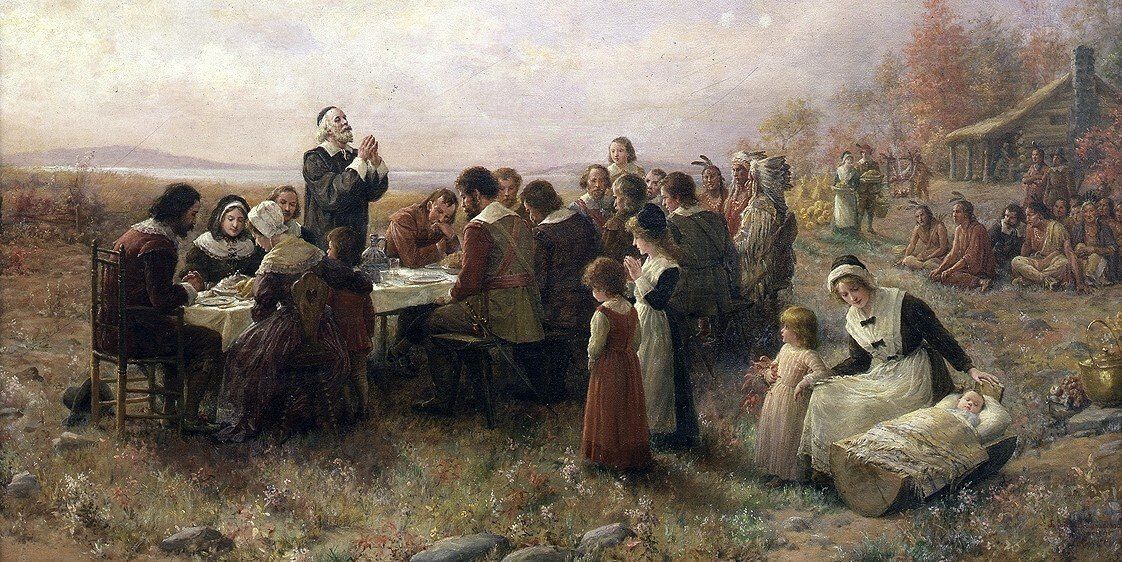Who Wrote Genesis?
Who Wrote Genesis?
Most of us, probably, have never given much thought to who, in fact, authored the book of Genesis, because, like me, you thought Moses was the accepted author. In fact, this was general knowledge, until 1753, when a French physician named Jean Astruc argued there were two different writers for Genesis one and two. He argued for this idea because there are two different names used for God in these chapters.
In time, this spawned an elaborate documentary on the origin of the Pentateuch by the German higher critic, Julius Welhausen (1844-1918), which, along with the spread and support of Darwinian evolution allowed every liberal theologian all over the world to deny the Mosaic authorship of the Pentateuch. His theory, commonly called the Documentary Hypothesis, provided an apparent academic foundation for the notion that the five books of Moses were authored by numerous writers whose stories were passed along through oral traditions.
However, it only requires a casual glance into the Old Testament text to unmistakably see that Moses is the author of Exodus, Leviticus, Numbers and Deuteronomy. No serious question here, because there are at least forty references throughout the Old Testament definitely connecting Moses as the author of these four books. 1 But what about Genesis?
Since the Pentateuch is generally considered to be a unit of five books, it is interesting to see that out of the two hundred times Genesis is cited in the New Testament, Moses is never specifically mentioned as its author. 2 However, in Luke 24:27 we find an interesting verse. Here, Luke is recording the account of two disciples returning to their home from Jerusalem after the resurrection of Jesus. As they walked along the road to their village of Emmaus, they intently discussed the report of Christ’s resurrection, and “ and Jesus Himself drew near, and went with them ” (Luke 24:15, KJV).
Because they didn’t recognize Him, Luke tells in verse 27 that Jesus “ beginning at Moses and all of the prophets, He expounded unto them in all of the Scriptures the things concerning Himself .” Question : (1) Where is the first Old Testament mention of Christ? It is in Genesis 3:15. (2) Is Genesis part of the Scripture? Of course it is. (3) Where did Luke say Jesus began His teaching? He began with the writings of Moses. (4) What, then, is the obvious conclusion to this verse? That either Moses is the author of Genesis, or that Genesis is not a part of the Scripture.
Just to be sure I checked in other standard versions of the New Testament to see if the translation read in the same manner, and it did. The New International Version says, “ And beginning with Moses and all of the Prophets, he explained to them what was said in all of the Scriptures concerning himself .” The New American Standard Version says, “ And beginning with Moses and with all of the prophets, He explained to them the things concerning Himself in all of the Scriptures .” The New King James Version says, “ And beginning at Moses and all of the Prophets, He expounded to them in all of the Scriptures the things concerning Himself .” Lastly, the Revised Standard Version says, “ And beginning with Moses and all the prophets, he interpreted to them in all of the scriptures the things concerning himself .” It seems clear to me that as far as Jesus was concerned, Moses authored, or at least, edited and compiled the book of Genesis!
How, then, did Moses gather the information contained in the book of Genesis? There are three possible ways to determine how God directed Moses in the composition of the book of Genesis:
(1) Moses wrote and compiled the information that was passed on by oral tradition.
(2) He received the information by direct revelation.
(3) He wrote or compiled Genesis by using earlier written documents. 3
The first view seems quite unlikely since Moses was plainly told by God in Deuteronomy 31:19-22 that he should write down the song he was teaching the people so that they would not forget it. 4 God is saying, in effect, to safeguard the sanctity of the message, I want it written down for the people. Thus He is obviously showing that He has little faith in the oral transmission of His Word from generation to generation, due to the high probability that that information can be forgotten or degraded in some way. 5 The second view also seems unlikely because of the reoccurring historical requirements of the Genesis. 6 The third seems to be the most likely option, and this is due to current archaeological findings combined with the above mentioned historical markers. Nine times, in the Genesis text (King James Version), there is the reoccurring phrase, “… these are the generations of… ” The first mention of these phrases is in Genesis 2:4, and specifically involves the Hebrew word “ TOLeDOT ” (pronounced to-led-dote’), meaning, essentially, descent, family or history. 7
There is much debate regarding whether the word is used prescriptively, as an introduction of things to come, or postscriptively, as a summary of things and events just happened. I think the postscriptive use is obvious, thus presenting the conclusion of action just completed. That is not to say, however, that Genesis does not speak of the One who is to come mentioned in Gen. 3:15.
Consider this. In 1936, P. J. Wiseman wrote a book entitled, New Discoveries in Babylonia about Genesis , and he stated that there are internal clues in Genesis which show how it was written. 8 These clues come from the system of cuneiform writing encompassing many languages and dialects. Cuneiform writing was a pictographic system of writing, probably developed by the ancient Sumerians (cir. 3000 B.C.), that used wedge shaped characters. The Hebrew word for write means to “cut or dig” and accurately portrays the cuneiform writing style. 9 All the civilized countries east of the Mediterranean, including Egypt, and the Hittites, used this method of writing. Wisemen identified the “TOLeDOT” phrase in the ancient Mesopotamian writings of Persia, Babylonia and Assyria. These phrases are referred to as colophons, which are a scribal or signatural device placed at the conclusion of a literary work written on clay tablets (in other words a signature). 10
These colophons give the title or description of the passage, period, or occasion in which it was written and the name of the owner or writer of the tablet. 11 For practical purposes, the use of these colophons remained almost unchanged for over three thousand years. They were found in the Ebla tablets of northwest Syria as early as 2700 B.C. and continued at least until the time of Alexander the Great in 333 B.C. 12 We even see a form of colophons in articles today.
The colophon in Genesis 2:4, says: “ This is the history (toledoth) of the heavens and the earth, when they were created, in the day that the LORD God made the earth and the heavens.” We note, first of all, that no author is mentioned, as is recorded in all other of the “toledoth” passages. But, who could be the author of this record? Certainly no man could have witnessed this event, only the Creator! Some think this particular record was told to Adam by the LORD, and others believe this was revealed to Moses in response to his request to see the LORD’s glory in Exodus 33:18. 13 And God may have written it himself on clay tablets as He did the Ten Commandments, allowing Moses to act as editor of the text through divine inspiration. Thus his job would not only have been to edit and compile but also to update the names. 14
I would like to note that the Jewish scribes must have had a deep desire to maintain the original text due to the painstaking and systematic effort they took to make sure the words were written accurately. The Dead Sea Scrolls exemplify this, being over 95 percent accurate with the only differences being, a few style and spelling discrepancies. 15 This respect for God’s Word could only have been passed down from the patriarchs and Moses who did not change the old names in the text as he translated it but gave explanations talking about the new names of these places as seen in Genesis 23:2&19 & 35:19. 16 Genesis 23:2&19 shows us that since he had to explain where these places were, the Israelites were not yet in Canaan. 17
| Toledoth Passages in Genesis | Colophon (belonging to or authorship) |
| 1:1-2:4 | Record of creation |
| 2:5-5:2 | Adam |
| 5:3-6:9a | Noah |
| 6:9b-10:1 | The sons of Noah |
| 10:2-11:10a | Shem |
| 11:10b-11:27a | Terah |
| 11:27b-25:19a | Ishmael and Isaac |
| 25:19b-37:2a | Esau and Jacob |
| 37:2b-50:26 | Probably Joseph (see explanation below) |
Joseph, in Egypt, probably wrote the remaining chapters, the use of cuneiform was known there also. He more than likely wrote on papyrus or leather since it is lacking the colophons, which only have to do with the use of the stone tablets. 18 So in order to understand Jesus as the Messiah we must accept Him as the Creator and I believe we have Moses to thank for this accurate compilation of the book of Genesis.
Reference:
1.) Annotations by Morris, Henry M., Defender’s Study Bible
,
World Publishing, Grand Rapids, MI, 1995. 2.
2.) Morris, 2.
3.) Lubenow, Marvin L., Bones of Contention: A Creationist Assessment of Human Fossils
.
Baker Books, Grand Rapids, MI, 1992. 213.
4.) Lubenow, 215.
5.) Lubenow, 214-215.
6.) Lubenow, 214.
7.) Lubenow, 216.
8.) Lubenow, 216.
9.) Lubenow, 214.
10.) Lubenow, 217.
11.) Lubenow, 217.
12.) Lubenow, 214 & 219.
13.) Lubenow, 219.
14.) Lubenow, 221.
15.) McDowell, Josh, and Bob Hostetler. Beyond Belief to Convictions
.
Tyndale House Publishing, Wheaton, IL. 2002. 172
16.) Lubenow, 221.
17.) Lubenow, 221.
18.) Lubenow, 220.



